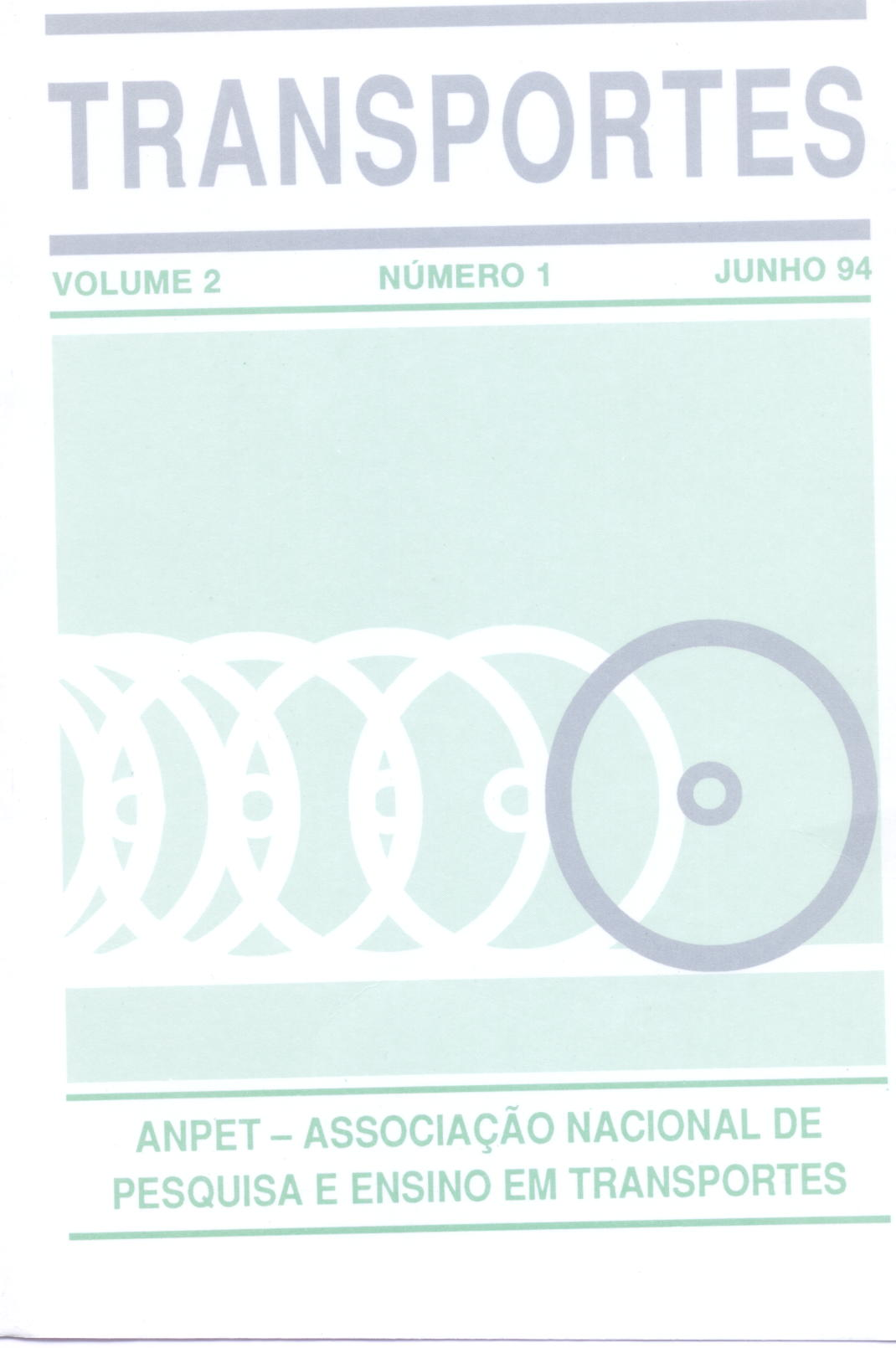CALIBRAÇÃO DO MODELO SEMI-COMPENSATÓRIO DE ESCOLHA MODAL
DOI:
https://doi.org/10.14295/transportes.v2i1.330Abstract
Dois são os objetivos deste trabalho: o primeiro e apresentar uma maneira de calibrar o modelo Semi-compensatório do comportamento de escolha do usuário de transporte de passageiros, e o segundo, relatar um resultado preliminar de calibração. Esse novo modelo foi concebido e desenvolvido a partir do pressuposto de que a escolha do meio de locomoção se faz através da avaliação das utilidades intrínsecas das alternativas disponíveis e das utilidades atribuídas às quantias que se "desembolsam" em cada alternativa. A forma não convencional do modelo (não-compensatório e determinístico) requereu a concepção e o desenvolvimento de um processo para a sua calibração: uma aplicação da técnica de maximização da verossimilhança. Esse processo foi aplicado a dados referentes a um grupo de 95 pessoas (50 funcionários da Escola de Engenharia de São Carlos-USP e 45 funcionários do DER-SP, Regional de Campinas). O resultado da calibração mostrou-se satisfatório, pois aproximadamente 85% das escolhas preditas pelo modelo calibrado coincidiram com as escolhas realizadas pelo grupo estudado.
Abstract:
There are two objectives in this paper: the first one is to present an alternative way to calibrate travel behaviour models with semi-compensatory structures; the second one is to analyse some preliminary results of a calibration exercise. This new model has been developed based upon the following assumption: the choice of transport mode is made on the basis of the assessment of the intrinsic utilities of available transport alternatives and the utilities attached to the amount of money needed to travel in each of these alternatives. The non-conventional structure of the model (non-compensatory and deterministic) has required the conception and development of a calibration process: an application of the maximum likelihood estimation technique. This process has been applied to a data base which consisted of information obtained from a group of 95 users (50 of them were staff of the São Carlos Engineering School and the remaining were staff of the São Paulo State Highway Department). The calibration result was considered satisfactory as approximately 85% of the choices predicted by the model has coincided with the observed ones.
Downloads
Downloads
Published
How to Cite
Issue
Section
License
Authors who submit papers for publication by TRANSPORTES agree to the following terms:
- The authors retain the copyright and grant Transportes the right of first publication of the manuscript, without any financial charge, and waive any other remuneration for its publication by ANPET.
- Upon publication by Transportes, the manuscript is automatically licensed under the Creative Commons License CC BY 4.0 license. This license permits the work to be shared with proper attribution to the authors and its original publication in this journal.
- Authors are authorized to enter into additional separate contracts for the non-exclusive distribution of the version of the manuscript published in this journal (e.g., publishing in an institutional repository or as a book chapter), with recognition of the initial publication in this journal, provided that such a contract does not imply an endorsement of the content of the manuscript or the new medium by ANPET.
- Authors are permitted and encouraged to publish and distribute their work online (e.g., in institutional repositories or on their personal websites) after the editorial process is complete. As Transportes provides open access to all published issues, authors are encouraged to use links to the DOI of their article in these cases.
- Authors guarantee that they have obtained the necessary authorization from their employers for the transfer of rights under this agreement, if these employers hold any copyright over the manuscript. Additionally, authors assume all responsibility for any copyright infringements by these employers, releasing ANPET and Transportes from any responsibility in this regard.
- Authors assume full responsibility for the content of the manuscript, including the necessary and appropriate authorizations for the disclosure of collected data and obtained results, releasing ANPET and Transportes from any responsibility in this regard.









